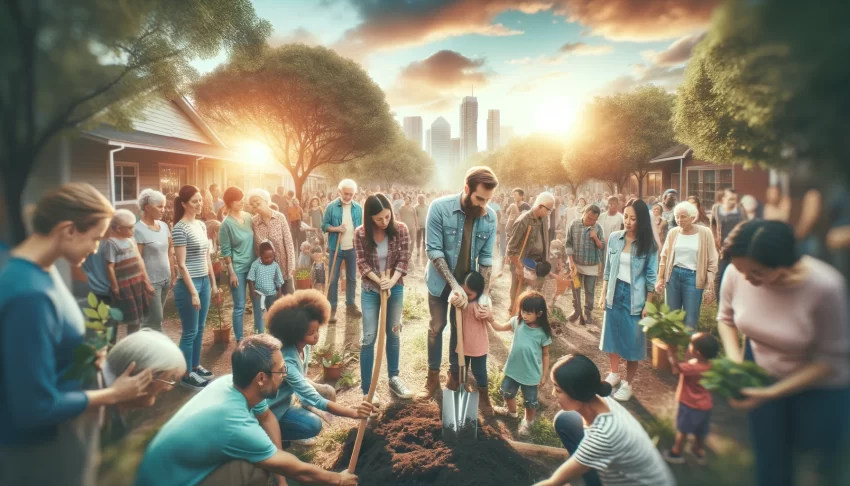| Listen to our audio presentation: The Historical Bond Between Humans and Dogs |
Every year on April 22nd, millions of people around the globe participate in Earth Day, a celebration dedicated to environmental protection and sustainability. This annual event marks a moment of environmental reflection and action, an opportunity to reassess our relationship with the natural world. Earth Day’s origins date back to 1970, a pivotal year in the modern environmental movement, spearheaded by Gaylord Nelson, a U.S. Senator from Wisconsin. Since then, Earth Day has evolved from a national environmental teach-in to a global day of awareness, action, and change.
The Genesis of Earth Day
The idea for Earth Day was born in the tumultuous era of the 1960s, amid rising awareness of environmental issues. Rachel Carson’s groundbreaking book, “Silent Spring,” published in 1962, had already exposed the dangers of pesticide use, igniting public concern for the health of the environment. This concern was compounded by visible environmental disasters, such as the 1969 Santa Barbara oil spill, one of the worst in U.S. waters at that time, and the pollution of the Cuyahoga River, which famously caught fire. These events served as stark reminders of the environmental degradation happening across the country.
Galvanized by these events and inspired by the student anti-war movement, Senator Nelson proposed the first Earth Day as a “national teach-in on the environment.” He hoped to infuse the energy of student protests with an emerging public consciousness about air and water pollution. Thus, on April 22, 1970, 20 million Americans took to the streets, parks, and auditoriums to demonstrate against the impacts of 150 years of industrial development which had left a growing legacy of serious human health impacts.
The Growth and Globalization of Earth Day
The first Earth Day was a resounding success, leading to a wave of action, including the creation of the United States Environmental Protection Agency (EPA) and the passage of critical environmental laws such as the Clean Air Act, Clean Water Act, and the Endangered Species Act. Earth Day continued to grow through the decades, mobilizing activists and influencing environmental policies worldwide.
In 1990, Earth Day went global, with 200 million people in over 140 countries lifting environmental issues onto the world stage. This massive mobilization helped to boost recycling efforts worldwide and brought environmental issues into the global spotlight, paving the way for the United Nations Earth Summit in Rio de Janeiro in 1992.
Earth Day in the 21st Century
In recent years, Earth Day has embraced themes that reflect urgent environmental issues, such as climate change, environmental injustice, and the importance of biodiversity. The day now serves as a platform for widespread education and action, with each year focused on a specific environmental concern. For instance, Earth Day 2020 marked the 50th anniversary of the first Earth Day, with the theme of climate action. Despite the global COVID-19 pandemic, the celebrations moved online, and millions of people around the world engaged in digital Earth Day events, highlighting the resilience and adaptability of environmental activism.
Impact and Continuing Challenges
The impact of Earth Day is evident in the enhanced environmental awareness and actions it has inspired globally. However, the fight for a clean environment continues with increasing urgency, as the globe faces unprecedented environmental crises, including climate change, deforestation, loss of biodiversity, and pollution. Earth Day serves as a reminder of the work that still needs to be done and the ongoing efforts needed to protect our planet for future generations.
Conclusion
As Earth Day approaches each year, it offers a vital opportunity for individuals, communities, and governments to reconnect with the environment and recommit to the planet’s health. Whether through global clean-up campaigns, educational programs, or legislative advocacy, Earth Day catalyzes action across borders, beliefs, and backgrounds, fostering a collective stewardship of the environment. On Earth Day, we remember that every day is an opportunity to make real environmental change. As the Earth Day Network often says, “Earth Day is every day, and anywhere you are.” The ongoing challenge is not just to celebrate Earth Day but to ensure that its principles are integrated into daily life, sustaining a movement that not only celebrates the earth but actively participates in its preservation.

